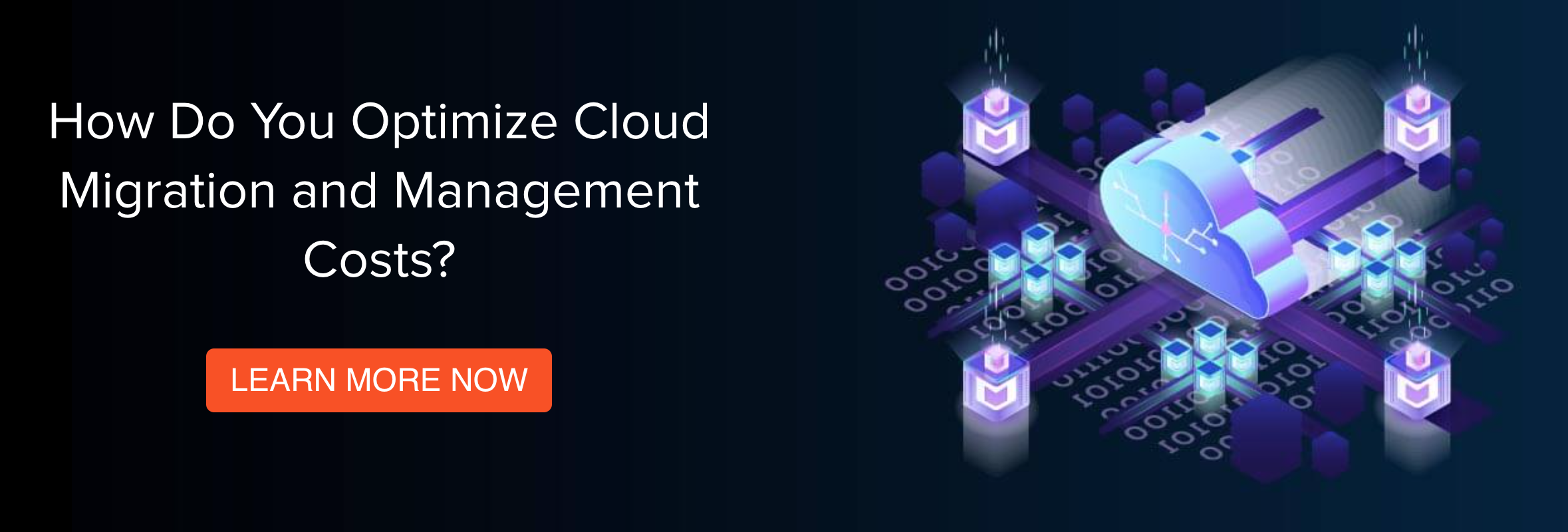The importance of security in cloud migration cannot be overstated. Cloud migration involves the transfer of an organization's sensitive data and critical applications from a trusted on-premises environment to a cloud service provider's infrastructure, which requires careful consideration of security measures to ensure the protection of the data.
Before organizations can make the switch to the cloud, here is everything you should be aware of to ensure data security.

The Importance of Cloud Migration Security
During cloud migration, sensitive data may be exposed to various types of threats, including unauthorized access, data breaches, cyberattacks, and insider threats. As such, it's crucial to ensure that the migration process is secure and that data is adequately protected throughout the process.
Failure to address security in cloud migration can have significant consequences, including loss of data, financial losses, damage to reputation, legal liability, and non-compliance with regulatory requirements.
To ensure a secure cloud migration, companies must identify the potential security risks and vulnerabilities that exist in the current environment and implement security measures tailored to the specific needs of their organization. These may include using encryption for data in transit and at rest, enforcing access controls, conducting vulnerability testing, and having backup and recovery mechanisms in place.
Overall, prioritizing security in cloud migration is critical to the success of any cloud migration initiative. By ensuring the security of data and applications throughout the process, organizations can protect themselves from potential risks and minimize the impact of any security breaches.
Risks of Cloud Migration
While a highly beneficial process, cloud migration presents several risks to organizations, so it's essential to understand these risks before embarking on a migration project. Here are some of the main risks associated with cloud migration:
Data breaches and cyberattacks
One of the most significant risks of cloud migration is the potential for data breaches and cyberattacks. Cloud service providers are a common target for hackers, and if an organization's data is compromised, it can result in significant financial and reputational damage.
Lack of control and visibility
When data is migrated to a cloud environment, organizations may have limited visibility and control over the data. This can make monitoring and managing the data challenging, potentially leading to compliance issues.
Compliance and regulatory issues
Many organizations operate in industries subject to specific regulatory requirements, such as HIPAA for healthcare organizations or GDPR for companies doing business in the European Union. If data isn't adequately protected or managed in the cloud environment, it can result in non-compliance with these regulations.
Vendor lock-in
Cloud service providers offer a range of services and solutions, and it can be challenging to switch providers once an organization has migrated its data. This can result in vendor lock-in, where an organization cannot move its data to a different provider without significant disruption.
Technical issues
Cloud migration involves transferring large amounts of data to a new environment, and technical issues can arise during the process. This can result in data loss or corruption, which can be detrimental to an organization's operations.
Overall, the risks associated with cloud migration are significant and must be carefully considered before starting a migration project. Organizations should conduct a thorough risk assessment and develop a comprehensive migration strategy that addresses these risks and ensures that data is adequately protected throughout the migration process.
Key Security Considerations for Cloud Migration
When migrating to the cloud, it's crucial to prioritize security and take the necessary measures to ensure the protection of data and applications. Here are some key security considerations for cloud migration:
- Data classification and access control: Before migrating data to the cloud, it's essential to classify it based on its sensitivity and establish access controls that limit who can access the data. This helps ensure that only authorized users have access to sensitive data.
- Encryption: Encryption is a critical component of cloud security and involves converting data into code that can only be deciphered with a specific key. Encrypting data during transmission and storage ensures that it remains secure even if it's intercepted by unauthorized parties.
- Identity and access management: A robust identity and access management (IAM) system is critical to cloud security. IAM ensures that only authorized users can access data and applications in the cloud environment and helps monitor and manage user activities.
- Vulnerability testing: Regular vulnerability testing is necessary to identify and address any weaknesses in the cloud environment that could be exploited by hackers. This testing can be conducted manually or through automated tools that scan the environment for vulnerabilities.
- Disaster recovery and business continuity: Organizations must have a disaster recovery and business continuity plan in place to ensure that they can quickly recover from any data loss or service disruption in the cloud environment.
- Compliance and regulatory requirements: Organizations must ensure that they comply with regulatory requirements and standards, such as HIPAA, GDPR, and PCI DSS. Compliance involves ensuring that data is adequately protected and that appropriate controls are in place to manage access and monitoring.
Security Frameworks for Cloud Migration
Several security frameworks can be used to guide the implementation of security measures for cloud migration. Some of the commonly used frameworks include:
- National Institute of Standards and Technology (NIST) Cybersecurity Framework: The NIST Cybersecurity Framework provides guidelines for organizations to manage and reduce cybersecurity risks. The framework includes five core functions: identify, protect, detect, respond, and recover.
- Cloud Security Alliance (CSA) Cloud Controls Matrix (CCM): The CSA CCM provides a comprehensive set of security controls for cloud providers and users. The matrix includes 133 security controls that are mapped to various industry standards, including ISO/IEC 27001 and PCI DSS.
- ISO/IEC 27001: ISO/IEC 27001 is an international standard that outlines best practices for information security management systems. The standard includes a risk management approach and provides a framework for implementing and managing security controls.
- Payment Card Industry Data Security Standard (PCI DSS): PCI DSS is a set of security standards established by major credit card companies to protect cardholder data. The standard includes 12 requirements for securing cardholder data and is mandatory for any organization that accepts credit card payments.
By adopting one or more of these security frameworks, organizations can ensure that they have a robust and comprehensive approach to securing their data and applications in the cloud environment.
Best Practices for Cloud Migration Security
Now that you understand the basics of cloud migration security, it's time to start implementing best practices. By following these, organizations can ensure the security of their data and applications during the cloud migration process.
- Conduct a thorough risk assessment: Before starting the migration process, organizations should conduct a comprehensive risk assessment to identify potential risks and vulnerabilities. The risk assessment should consider factors such as data sensitivity, regulatory requirements, and security measures provided by the cloud service provider.
- Choose a reputable cloud service provider: When selecting a cloud service provider, organizations should choose a reputable provider with a proven track record of security and compliance. The provider should have robust security controls and provide transparency about its security practices.
- Encrypt data during transmission and storage: To ensure the confidentiality and integrity of data during migration, it's essential to encrypt data both during transmission and storage. This helps ensure that the data remains secure even if it's intercepted or accessed by unauthorized parties.
- Use multi-factor authentication: Multi-factor authentication is a critical component of cloud security and involves requiring more than one form of authentication to access data and applications in the cloud environment. This helps prevent unauthorized access and strengthens the security of the cloud environment.
- Implement access controls: Access controls are essential to ensure that only authorized users can access data and applications in the cloud environment. Access controls should be established based on data sensitivity and include measures such as role-based access control and data classification.
- Implement continuous monitoring: Continuous monitoring of the cloud environment is necessary to detect and respond to potential security incidents. Monitoring should include activities such as log analysis, vulnerability scanning, and intrusion detection.
- Have a disaster recovery and business continuity plan: Organizations must have a disaster recovery and business continuity plan in place to ensure that they can quickly recover from any data loss or service disruption in the cloud environment.
Ensuring the security of data and applications during the cloud migration process requires careful planning and implementing robust security measures. By following these best practices and adopting a comprehensive security framework, organizations can ensure that their data remains secure throughout the migration process and beyond.








